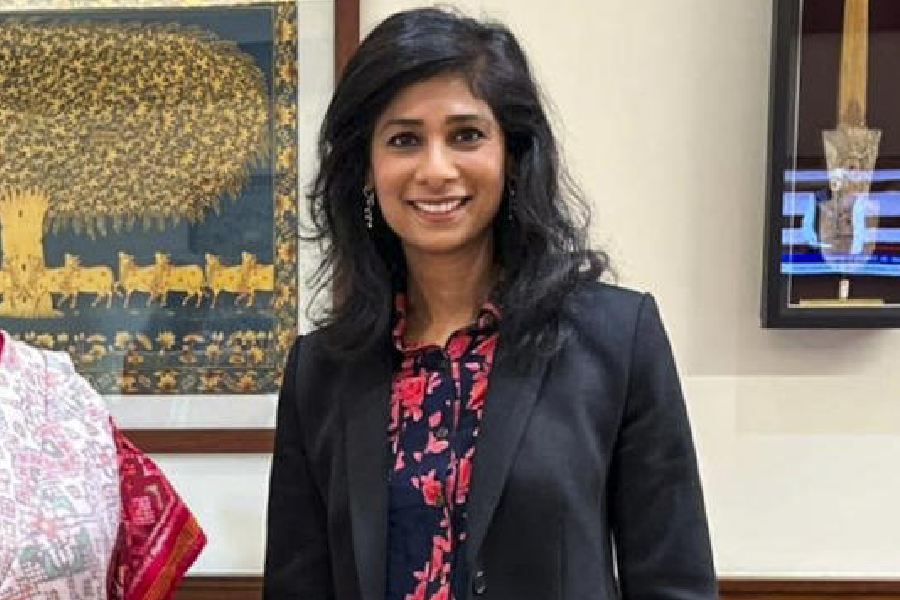 |
New Delhi, July 2: A CPI(Maoist) attack on a BSF patrol team last Sunday that led to the death of two jawans, while the rebels themselves lost as many as 10 cadres has thrown up fresh worrying signals.
For, it suggests that the pitched battle that the BSF had to fight near Koilabeda in Kanker district of Chhattisgarh on June 26 was to counter not merely an ambush but a full-fledged Maoist military campaign undertaken as a part of a larger plan to secure a “liberated” zone and connect it to other strongholds spread across states including Orissa and Jharkhand.
That day the BSF’s 163rd Battalion recovered the body of an apparently senior Maoist military commander in black uniform with a star on the shoulder and the cap.
Both sides lost men — including a few Maoists women cadres — but security forces claim they got the better of the rebels. “We were able to kill 10 Maoists, if not more,” said BSF director-general Raman Srivastava.
For the security forces, who are still unable to forget the death of 76 uniformed men in Dantewada on April 6 last year, it came as a boost.
The difference, though, was that the encounter was the first clear sign the Maoist military campaigns were replacing guerrilla attacks, something the rebels said they were planning to resort to in June, 2009.
That day, the Maoists sent two “military companies” to attack the 85-men strong BSF group on an area-domination patrol while one company waited as a reserve.
An “L-shaped ambush” was laid out for the BSF men even as a uniformed Naxalite fired from a light machine gun atop a tree while others fired mortars.
That offensive, apart from other recent ones, have served security personnel a reality check.
Firstly, military campaigns were replacing guerrilla attacks.
The Maoists’ military and guerrilla groups are different and it is only when some areas are secured or “liberated” that they unleash military campaigns.
The purpose is to secure the “liberated zone” of south Chhattisgarh and connect it with pockets in Orissa, Jharkhand and Maharashtra.
“They are increasingly focusing on protecting these liberated zones and that is through these military campaigns. The positive aspect is that these military companies are not attacking head-on but behaving like guerrilla companies, which means they are wary of police forces,” said a senior home ministry official.
Former home secretary G. K. Pillai believes it was good that it happened as it exposed the rebels’ military was inferior to the BSF’s fire power.
Maoists’ liberated zones are areas where security forces have no presence while the administration has a skeletal presence and jawans put up a fight in the guerrilla zones.
A Maoist military company comprises about 65 men and women. There are 17 such companies in the Maoist-held liberated and guerrilla areas besides a battalion of about 250 personnel. An army battalion, on the other hand, consists of 1,000 men.
The 17 rebel units are scattered — 10 companies in Dandakaranya (DK) under a special zonal committee, four in the Jharkhand-Bihar border areas and three in the Andhra Pradesh-Orissa border special zonal committee.
With rebel activities on the rise in border areas, 5,000 more personnel of central forces are being deployed.
The liberated zone — also referred to as “base areas” — of Maoists in Maad and Saranda, the thickly forested areas in Chhattisgarh, Orissa and Jharkhand, has increased in the past two years or so, government sources told The Telegraph.
The contiguous Abujhmaad region alone is estimated to be spread across 10,000sqkm, although areas under Maoist control may add up to several thousand more.
No one in the government wants to put a figure to the “liberated or guerrilla zone” even as Union home minister P. Chidambaram stands by his two-pronged “hold and develop” strategy.
Another indicator of the rebels’ increasing clout is that the number of Maoist jan adalats have doubled in the first five months this year to 43, from 22 in the corresponding period last year.
According to former BSF director-general and now chairman of Rajasthan Public Service Commission M.L. Kumawat, the increase indicated the need for governance. “They have the influence over Abujhmaad,” he said.
In Chhattisgarh, virtually the entire southern Bastar is under Maoist control, besides Malkangiri district near Orissa-Chhattisgarh border.
In Jharkhand, the rebels had a firm grip over the “entire Saranda forest area” while they had taken over huge swathes in Palamau and East Singhbhum districts over the past two years, intelligence sources told The Telegraph.
Maoists initially from guerrilla areas by pushing in militia and introducing local population to the writ. The next stage is guerrilla zones and then liberated zones.
A major concern for security forces is in Orissa, where Mayurbhanj district is situated deep in Naxalite territory. Over the past two years, areas of Nuapada, Bolangir and Bhargadh are being sucked into the “liberated zones”, top government sources told The Telegraph.
No wonder there has been little opposition from within the government to deploying training battalions of the army in Chhattisgarh’s Narayanpur area — “liberated” zone.
In Bihar, large areas in the Koel and Kaimur (Bhabua) region have also been taken over by the Maoists, government sources concede.










